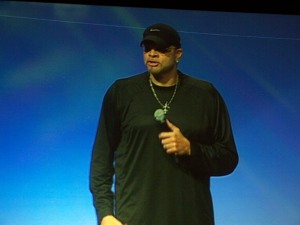I attended a number of presentations at the J.P. Morgan 29th Annual Healthcare Conference which was held in San Francisco earlier this week.
The first one was BD (Becton Dickinson) where Chairman and CEO Ed Ludwig said the company’s financial performance has improved over the last 10 years. Revenue growth has gone from $5.5 billion in 2006 to $7.4 billion in 2010. That is from all three of its segments. Diagnostics growth was at 4.2%. The company had double digit growth in Asian markets, which does not include Japan. BD mid-term growth drivers were at $3.8 billion and included Safety (Intima II, Nexiva), Pharm Systems, Diabetes Care (pen needles), International Expansion (ReLoCo, and Rekindle). BD Diagnostics mid-term growth drivers were at $2.3 billion and included strengthening leadership in microbiology, expanding position in molecular and cancer diagnostics, investing in BD Viper XTR, Viper LT, BD HPV Test; BD Surepath Plus Molecular Pap Test, and BD MAX 6 color open system. BD BioSciences mid-term growth drivers were at $1.3 billion and included strong instrument and reagent opportunities, two next gen analyzers, and next gen lower-cost desk top sorter, and first animal free, antibiotic free facility in Miami. According to Ludwig, the company will be investing in R&D, key platform extensions and new products. They also plan to invest in rapidly growing emerging markets.
Later, I attended the Gilead session. John Martin, President at Gilead, said that the company has 13 products on the market. He also said that 2010 was a very productive year. Martin said the products they have in research and development include Elvitegravir, Truvada, Ambition, and Cayston. Commercial products include Viread – HBV and Cayston. They opened offices in Poland and Hong Kong. Gilead bought CGI Pharma for $120 million and Arresto Biosciences for $225 million. The company’s HIV products include Viread, Emtriva, Truvado, Efavirenz, and Atripla. The company combined Viread and Emtriva to get Truvada. They then combined Truvada and Efavirenz to get Atripla (single tablet). The potential use of Truvada for pre-exposure of HIV. Its HCV drug development will mimic the therapeutic development seen with HIV. They have two studies planned for 2011 for liver disease. Viread nine month sales in 2010 were $541 million.
I also attended the Biogen Idec session. According to Dr. George Scangos, CEO, the core fundamentals of the company are very are strong. Revenues have gone up from $1.9 billion in 2003 to $4.4 billion in 2009. They have three blockbuster drugs that include Avonex for MS, Tysabri for MS, and Rituxan for NHL. These products have generated over $9 billion of in market revenue. The company also has a product in development for ALS, Dexpramipexole. A Phase 3 trial is expected to begin in H1 2011. Scangos said that Biogen Idec has a new strategic direction. They are divesting their oncology program, closing the San Diego facility, and reducing the workforce by 13 percent. They expect OpEx savings of $300 million from restructuring. Part of their strategic focus is to expand its leadership position in MS.
Another session was Illumina. Jay Flatley, President of Illumina, presented the company’s key accomplishments in 2010. Product launches included HiSeq 2000, HiSeq 1000, HiScan SQ and TruSeq sample prep reagents. Its flagship product Omni 2.5 was launched in 2010. It is a commercial microarray for genomic research. It was its best selling array in its first full quarter of shipment. Consumer sequencing was lowered to $9500 for people with life threatening diseases and the company eclipsed 2000 employees. They had a 24 percent increase in Q4 over Q3 with shipments of its HiSeq product. Estimated earnings for the Q4 are $260 million and estimated revenue for the year is $900 million. Flatley expects 2011 to be a high potential year for Illumina. 2009 was challenging for the array business. In 2010, the market returned to some degree of normality. The firm expects its HiSeq 2000 to obtain 600 gigabases per run and its HiSeq 1000 to reach 300 gigabases per run in 2011. During the presentation, the company debuted it’s latest product, MiSeq, a low-cost personal sequencing system. Flatley said it will be priced under $125,000. Some of its key features include unprecedented performance with sequencing in as little as 4 hours, the reagents come pre-loaded in a single reagent tray, the flow cells are auto positioned, and individual run prices ranging from $400 to $750. The company plans to ship it later this year. They also announced the acquisition of Epicentre Biotech, a leading innovator in next gen sequencing and is located in Madison, WI. The company expects continued strength in the sequencing market.
